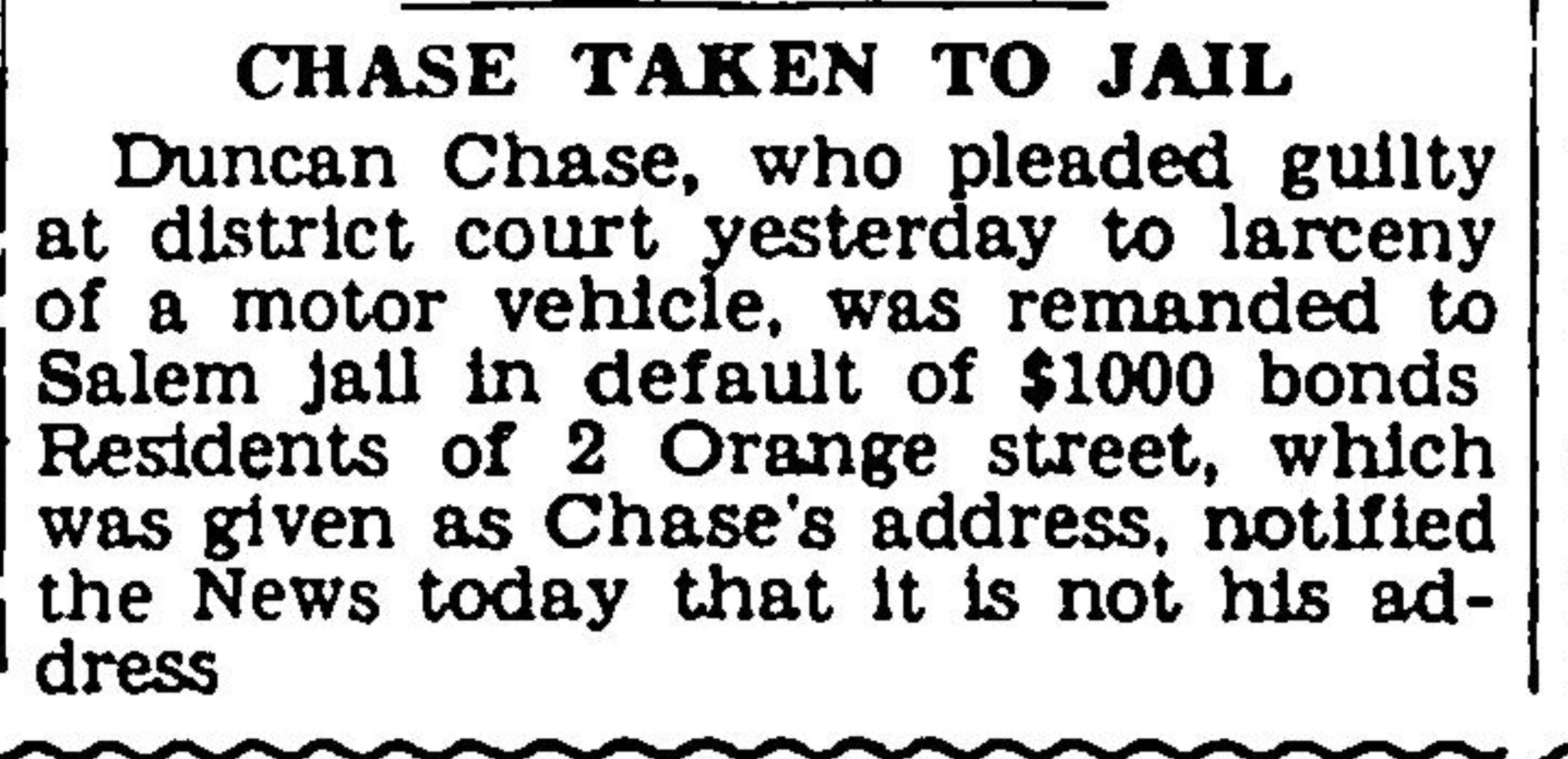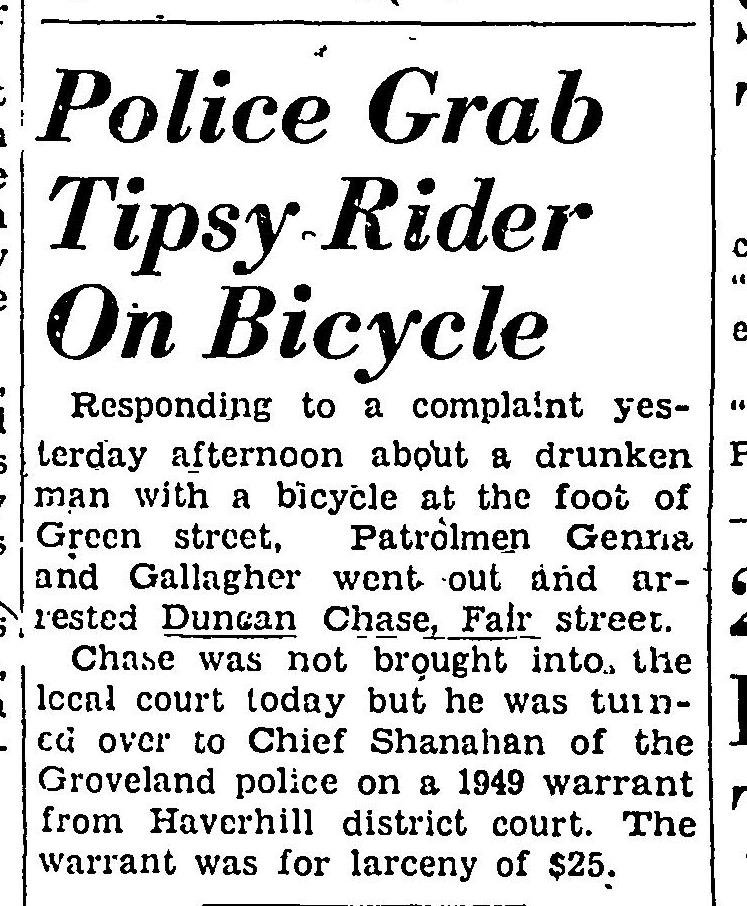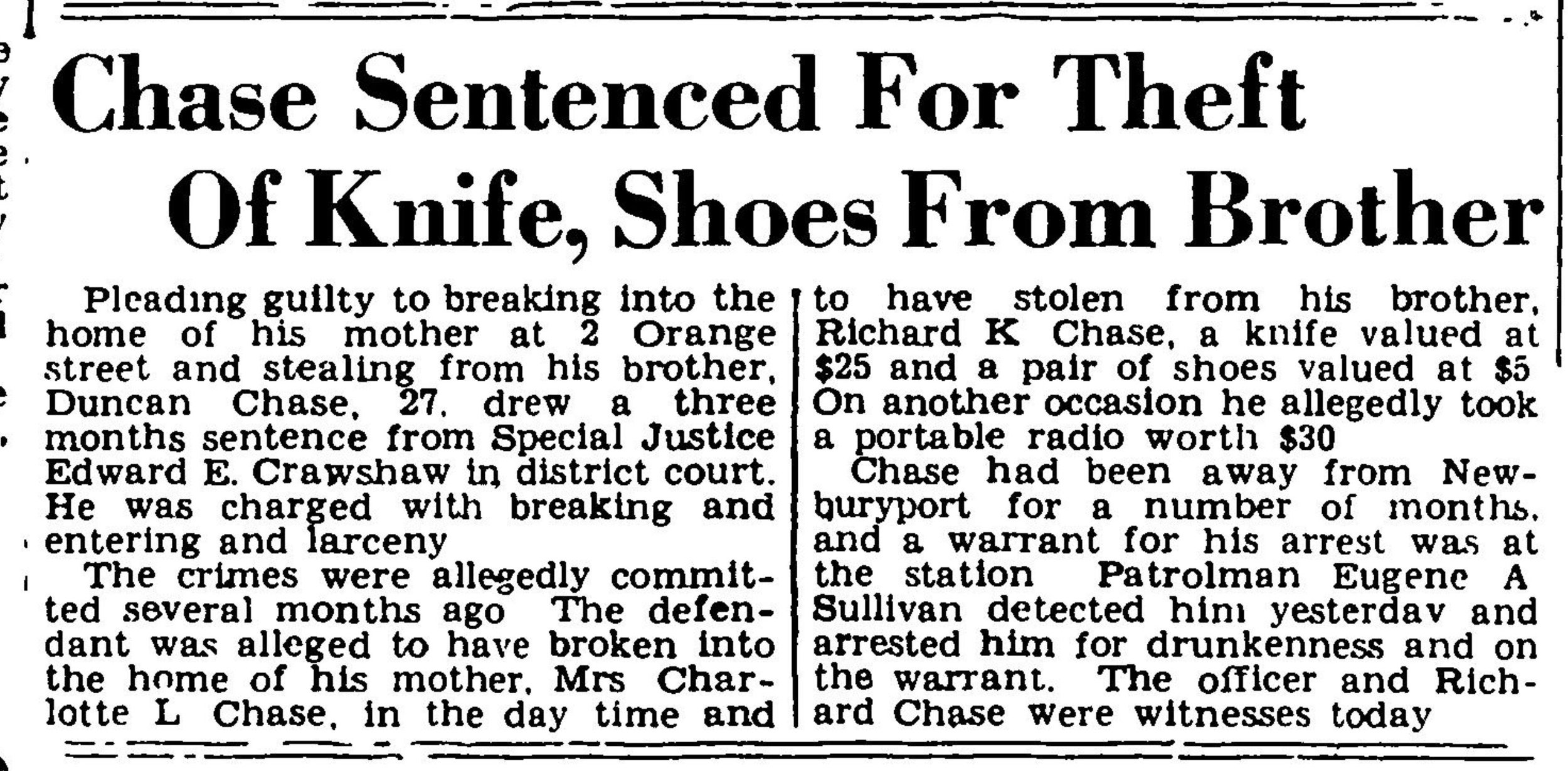Chasing Duncan
/by Bethany Groff Dorau
I was having lunch at the Grog recently, when my companion pointed to the portrait of a sea captain that hangs over the fireplace. “Who do you think that is?” she said, taking in the white beard, the nautical cap, the sparkling eyes. “That be Duncan Chase,” I said in my best fake pirate voice. “Ooh,” she said, trailing off…”Captain Chase.”
Duncan Chase, painting by Jim MIckelson courtesy of The Grog restaurant
Well sort of, though he answered to Colonel. I told her what I knew of the man – he was drunk all the time, and he was tall and loud. He told people he spent the winter in Cal-E-Fornia. He was a panhandler, meowing loudly at tourists and friends alike, usually wearing a jaunty scarf around his neck. After he died, he was given a plot and a headstone at Old Hill by kind Newburyporters.
My friend had questions. Was he born in Newburyport? Was he from the old Newbury Chase family? Where did he sleep? Why did he drink? Was he a veteran?
History, or historians at least, abhor a vacuum, and so I began to fill in the gaps. Maybe he was once in the Navy, I said. Seems the right age for World War II or Korea. He was probably the black sheep of an old Newbury family, returning from the war with a legacy of trauma and…hold the phone. I reeled it in. I had veered dangerously away from facts, or even rumor or memory. “I’ll see what I can find,” I said, and then forgot all about it until a few days later, when I ran into his headstone while looking for someone else. That’s two Duncan Chase sightings. And then I was looking up Chase & Shawmut online and up popped this picture of Duncan. That’s three. I can take a hint.
Duncan Chase, photo by Robert Atwater, mybigphatphotographs.com
I know right away that this was a picture of Duncan Chase passed out in a doorway, a bottle of whiskey in a paper bag next to him. I even thought I knew which doorway. I remember him there. I remember his signature call to passers-by, “I’m a cool, cool cat from NEW YORK CITY”. I contacted the photographer to ask permission to use the image. He kindly agreed.
And then it started to bother me – not the image, which was an accurate portrait of the man, but my lack of concern about it, my willingness to share it without context. To me, Duncan Chase was not a man worthy of my professional due diligence, but a caricature, a symbol of the town drunk, some charming relic of bygone old Newburyport who had become, in memory, one-dimensional.
And then I did the math. Duncan Chase and I never met. He died in 1980, when I was six years old and living in Canada. I knew him only from the stories I had been told. Maybe his ghost was in that doorway when I was hanging out at Inn Street, but the flesh and blood was long gone.
So I began at the end and worked my way back. I found his death record, then his birth record, then his parents’, then, voila, his paternal great-grandmother, Jane Merrill, already in my family tree. With a satisfying click, I added Duncan to my tree, watched his ancestors and mine match up and dance around. He settles in as my sixth cousin, once removed – one more piece of information that is about me, not him, really, but it gives me a place to start.
Duncan Howard Chase was born on Chestnut Street in Groveland on October 19, 1919, the youngest of four children born to Raymond Chase and Charlotte (Buxton) Chase. Duncan’s parents met in Haverhill and married young – Charlotte was just 16, Raymond was 22, and though both could read and write, neither had a high school education. Duncan’s father Raymond worked at a Haverhill shoe findings shop. At some point between 1930 and 1935, Charlotte Chase left her husband and moved to Newburyport with teenage Duncan, who had left school after 5th grade. They lived in a small apartment on Washington Street, then another apartment on Fair Street. She is listed as a sewer, working for the WPA, then a dressmaker, later a “practical nurse”, or uncertified health aide. It is possible she chose to come to Newburyport because her brother Myron Buxton was already here, listed in the 1931 directory as living on Kent Street with their mother. By 1937, Duncan Chase’s mother, uncle Myron and grandmother, Lenora, were living at 2 Orange Street, and it was this address that Duncan gave the police when, in 1939, he was apprehended in Florida for forgery, check larceny, and stealing a car from a Newburyport shoe factory foreman. He spent two months in jail, got out, worked as a laborer for Oscar Traister for about a year while stealing more checks, and then took off with another car.
Newburyport Daily News, Thursday, December 14th, 1939
This was the end of the line for Duncan’s family. His mother informed the newspaper in October 1941 that Duncan Chase was no longer at 2 Orange Street. When he went before a Salem judge in 1942, he promised to join the army “if he can be accepted.” He had nowhere else to go. The judge was encouraging. “You might make a record for yourself in the army. You might get the Distinguished Service Cross.”
Duncan Chase never entered the army. Two years later, he was sentenced to two years in prison for grabbing a woman’s purse on Bartlett Mall. In 1946, when Chase was 27 years old, he was arrested for breaking into his mother’s house on Orange Street and stealing his brother’s knife and shoes. It was the first time the record cited alcohol as a contributing factor.




In 1949, Duncan Chase and Hilda Olsen Carpenter were married in New London, New Hampshire. She gave her occupation as waitress, his as handyman. It was his first marriage, her second, and was over within a year. The next two decades were a slow slide into homelessness and addiction, and Duncan was repeatedly arrested for drunkenness and petty theft, unable to make bail, and veering between prison, locked hospital wards, and the streets of Newburyport and Haverhill.
By the time I was born in 1974, Duncan Chase had become one of the notable “characters” of Newburyport. In a nostalgic Boston Globe article, Jeremiah Murphy opined that “Old Newburyport is my kind of city,” while “Duncan Chase is still hanging around Market Square, except for an occasional vacation at the expense of the county. Almost every town has a Duncan Chase.”
Recently, the number of people living on the streets in American cities has sparked a heated, and recurring, debate. Some argue that unhoused people with addictions and mental and physical challenges should be placed in guardianships, effectively ending their rights to self-determination and legal adulthood. It is a thorny issue, with civil rights advocates arguing that the right to live on the fringes of society, to be weird, and make mistakes, and yes, even to drink too much and sleep on the ground if one chooses, should be protected. It is a slippery slope, they say, and once a person is placed in guardianship, it is extremely difficult to get back out. For others, the human rights issue is that those who most need help are least able to get it, and so someone else must advocate for them.
I do not have the answer. I could convincingly argue both sides of this issue. As for Duncan Chase. I do not know why he drank – he may not have known himself. Most people who met him have a story, and most of these stories are about how funny and charming and interesting he was. But there are others. He was frightening when he was angry. He would destroy things – break store windows and throw bottles to get locked up so he could have a place to sleep. Sometimes when the weight of his life settled in on him, he sobbed inconsolably. Some wish that there had been more intervention in his case. Others feel that he lived exactly as he chose and find nobility in that.
Duncan Chase is buried at Old Hill Burying Ground, the plot and stone paid for by his friends.
What I believe is that everyone, living or dead, deserves to have the truth told about them, so far as we are able, and that Duncan Chase, like all of us, is a complicated person, not just a picturesque symbol of old Newburyport, but not just a figure of pity either. The next time I look at a picture of him, all blue eyes and white beard, over the fireplace at The Grog, I will tell a truer version of his story, including the truth of the untrue parts. He was not from New York. He did not spend the winters in California. But he was a cool, cool cat.




